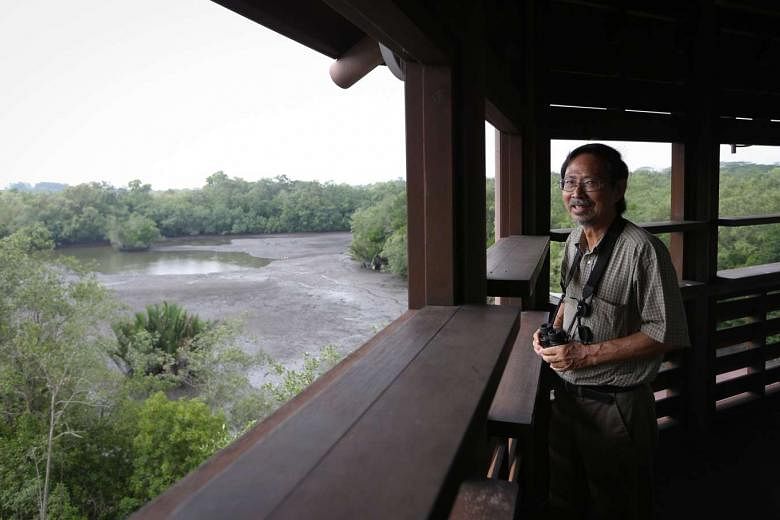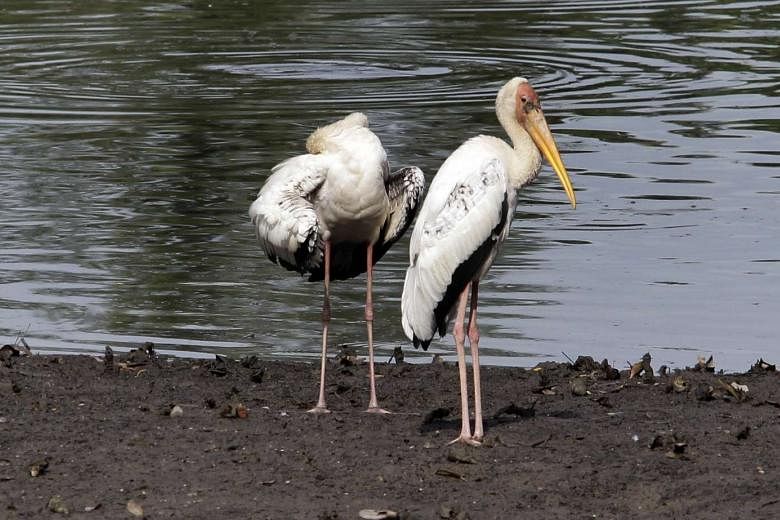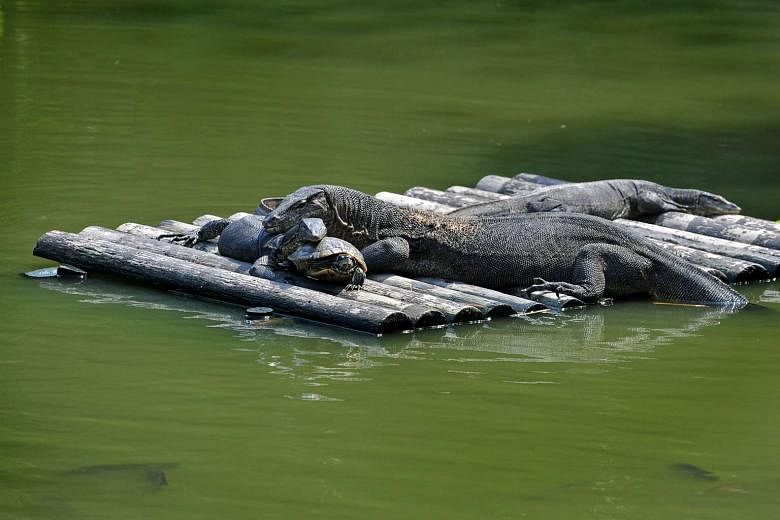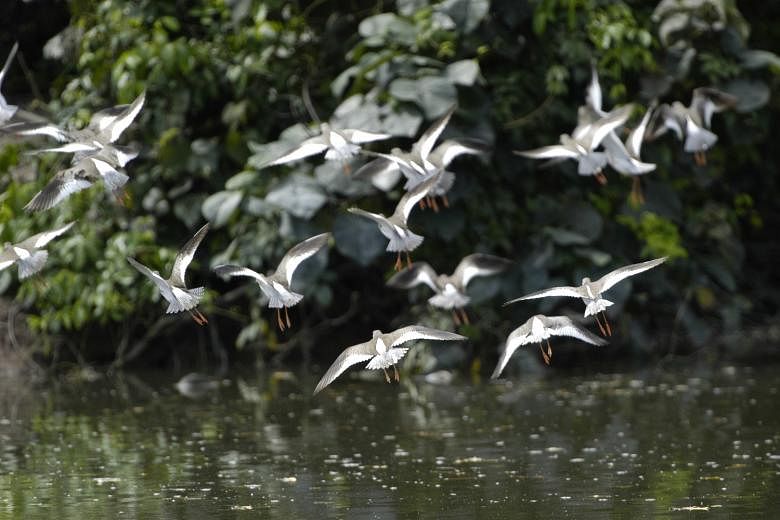Dr Ho Hua Chew still remembers the magical moment in 1986 when he first visited the coastal wetlands of Sungei Buloh.
It was low tide and migratory shorebirds were taking off in the hundreds, he recalls. "The air was alive with them. The view of the flocks gathering and wheeling around was simply spectacular."
Right away, Dr Ho knew he had to do something to preserve Sungei Buloh, which had been earmarked to be part of an agrotechnology park where prawns would be intensively farmed.
This was an exceptional thing to want to achieve in a nation which then focused on being exceptional in terms of economic development.
If successful, it would be the first time a sizeable area was set aside for nature conservation since Independence. It would also be the first time a civil society group successfully lobbied the Government for a change of plans.
-
CIVIL SOCIETY MILESTONES
-
• 1986: Disabled People's Association becomes first advocacy group officially registered.
• 1990: Nominated Member of Parliament scheme starts - provides more alternative voices in Parliament.
• 1993: Sungei Buloh Wetland Reserve officially opens, result of a proposal by the Malayan Nature Society - now Nature Society (Singapore).
• 1997: Women's Charter is amended to give family members, not just spouses, more protection against family violence, after campaigning by Association of Women for Action and Research.
• 2000: Speakers' Corner in Hong Lim Park opens.
• 2011: Greenery along 26km Rail Corridor to be preserved, after civil society groups campaign.
• 2013: Mandatory for employers to give domestic workers a day off every week. • 2014: Law protecting animal welfare is beefed up, following advocacy.
As it turned out, it was "the biggest milestone in the history of nature conservation in Singapore", says Dr Ho, 27 years later.
The nature enthusiast, now in his 60s, was part of the local chapter of the Malayan Nature Society - since renamed Nature Society (Singapore) - and feared the wetlands would suffer the same fate as the Sungei Serangoon estuary: Despite being known for attracting globally endangered migratory birds, it had been converted into a dumping ground a few years earlier.
"I felt very depressed by what I saw at Sungei Serangoon. Mangroves and mudflats were dwindling, vanishing right before my eyes as the tractors and lorries surged towards the shore," says Dr Ho, now vice-chair of the Nature Society's conservation committee.
He took the matter to the society's bird group, which formed a committee to work on a proposal to conserve the area, to be submitted to the Government. They made an inventory of the birdlife in Sungei Buloh and met eight times in 1987 to work on the proposal.
It was submitted in October 1987 to the National Reserves Board, which helped to channel the document to the relevant agency.
The group was heartened when then President Wee Kim Wee agreed to visit Sungei Buloh before any official decision was given.
"We had a delightful and sumptuous picnic under a lovely sky provided by Mr Wee gratis. I believe he had a wonderful time with us showing him the fascinating avian scene around," says Dr Ho.
The good news came in April 1988 from the Ministry of National Development, which told the group their proposal had been accepted.
Although they had proposed conserving about 318ha, only 85ha was eventually green-lit as the Sungei Buloh Wetland Reserve.
"Nevertheless, I felt a tremendous sense of relief - and elation," says Dr Ho. "Because at that time most people I spoke to about our proposal said 'Don't hope for it'."
Sungei Buloh was officially designated in 1989 as a sanctuary for wild birds, and opened to the public as a nature park in 1993.
The success was unexpected. In fact, people had warned them about "repercussions". Dr Ho says: "Perhaps we were lucky."
He thinks the proposal may have been well-timed, coming before the 1992 United Nations conference on the environment and development in Rio de Janeiro, Brazil. Singapore chaired the preparatory committee for the summit.
Whatever the reason, the times were a-changing, with a string of civil society breakthroughs on its heels. (See sidebar)
Dr Ho notes: "The Government is more open and very friendly and the sort of tension (of the) 1980s and 1990s has subsided tremendously, if not almost vanished."
Although the fight remains tough because the mantra of land scarcity is deeply ingrained among Singaporeans, the activist is optimistic.
He cites the Government's willingness to preserve Pulau Ubin as well as build public shelters and trails at Kranji Marshes for better access as encouraging signs.
"There appears to be some light at the end of the tunnel in recent years," he points out.






